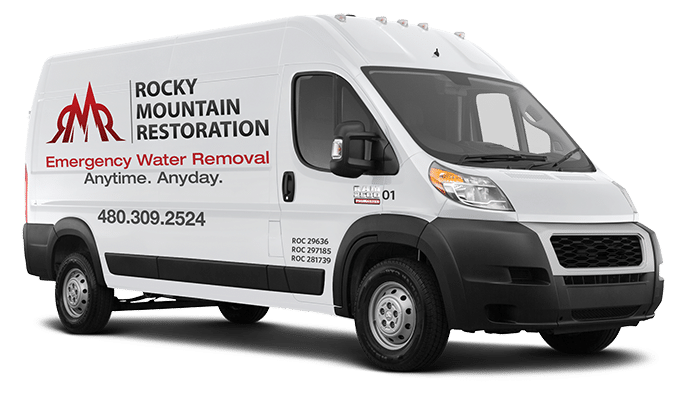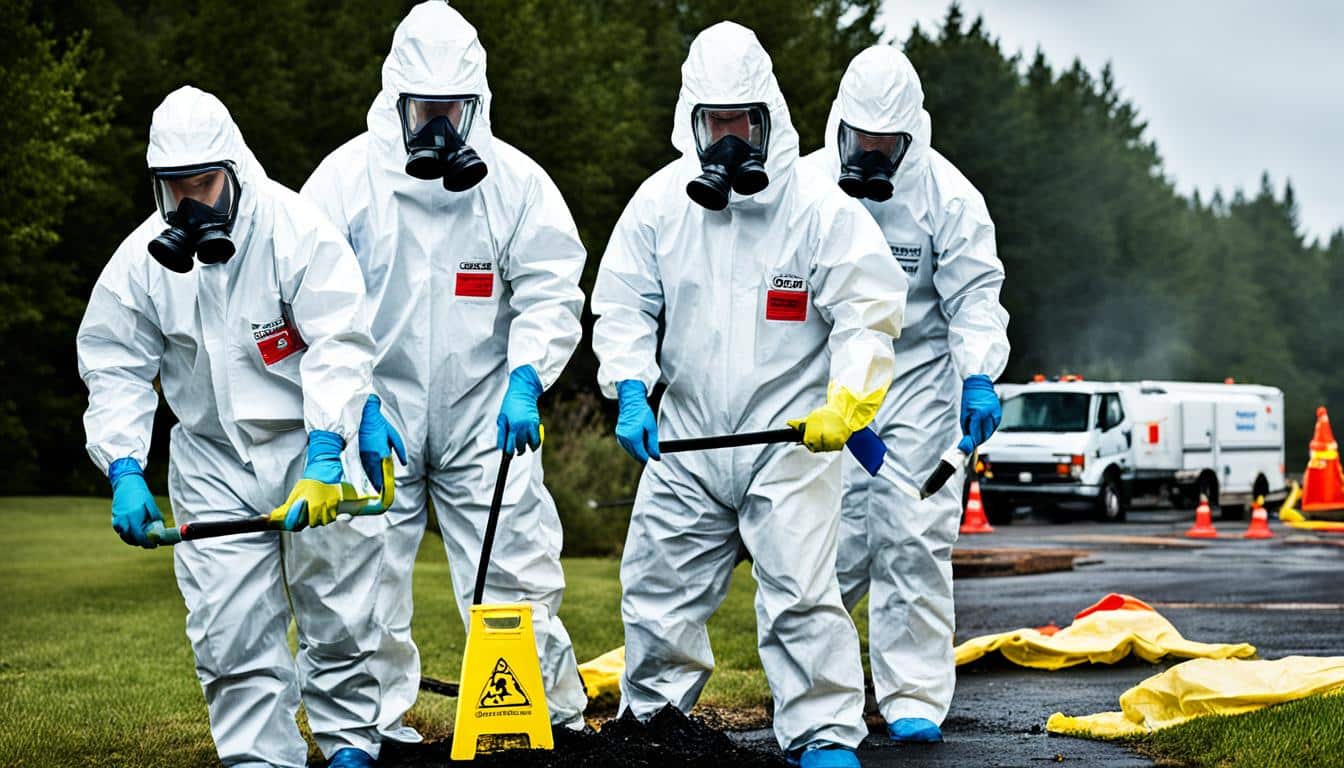If a home or business faces a biological hazard, cleanup becomes vital but not easy. Many wonder about the real cost of biohazard cleanup. The costs are not clear-cut. They depend on the contamination level and the professionals’ qualifications. In the U.S., you might pay between $500 and $5,000. But ensuring safety after such an event can be more than just a number.
The price of biohazard cleanup is tied to the specific situation. If bloodborne pathogens are present or if major waste disposal is needed, costs rise. Cleanup teams might charge $25 to $600 per hour.
Hiring uncertified teams might seem cheaper upfront. But it could affect safety and efficiency. The true cost of biohazard cleanup goes beyond the initial bill. It includes the well-being of everyone using the area later on.
Key Takeaways
- Understanding the nuances behind biohazard cleanup costs is essential for informed decision-making.
- Biohazard remediation pricing fluctuates extensively based on situation severity, cleanup crew certification, and biohazard risk level.
- The financial burden of biohazard services includes long-term safety and health considerations, not just immediate expenses.
- Certified biohazard crews, while potentially more expensive, offer greater assurance of proper cleanup and safety.
- Hourly rates for biohazard cleanup vary significantly, reflecting the diverse nature of biohazard situations.
- Choosing the right biohazard cleanup service is a critical investment in health, safety, and peace of mind.
Understanding Biohazard Cleanup
Biohazard cleanup is vital for handling incidents with biohazardous waste. This waste comes from living things and can be very harmful. Dealing with waste from people or animals needs careful steps to keep everyone safe.
Professional cleanup services have experts who are fully trained and wear the right gear. They know how to safely handle hazardous waste. Plus, they understand the best ways to clean up properly. This keeps places safe and smelling fresh afterward.
- Utilization of industry-grade tools and technologies to ensure thorough decontamination.
- Adherence to stringent safety protocols to prevent secondary contamination.
- Regular training sessions for staff to handle biohazardous scenarios effectively.
Following strict rules, these services are key to keeping the public and the environment safe. They clean up biohazards well, making sure there’s no risk after.
Cost Factors in Biohazard Remediation
The price of cleaning up biohazards depends on how much biohazard exposure there is. It also depends on what cleanup process requirements are needed for each case. Knowing these details is key to figuring out total biohazard cleanup expenses. Here’s a look at what makes these costs go up or down.
- Bloodborne Pathogens: Finding things like infectious fluids raises the cleanup risk. You need special gear and skilled people to handle this work.
- Duration of Cleanup: Longer cleanups mean higher costs. This includes more work time and more materials used.
- Thoroughness of the Cleanup: A detailed clean is a must for safety. This drives the expenses up.
Think about the team’s certifications and how complex safety measures are too. For instance:
- Experts with top certifications work better, which could save you money over time. They handle the job right from the start.
- Emergencies might push the cost up. Quick action could mean more work hours or special service times.
Different biohazard types affect prices in their own ways:
- Smaller issues like getting rid of pet smells might be cheaper and less risky for health.
- However, big tasks like cleaning crime scenes need a lot more work. This raises the cost.
Knowing these cost points is useful for planning and budgeting. It helps keep biohazard risks under control without blowing the budget.
The Range of Biohazard Cleanup Cost Estimates
Getting biohazard cleanup services can cost a lot, often between $3,000 and $5,000. A typical 2,000 square foot house might need $4,000 worth of cleanup. This involves dealing with dangerous substances.
For simpler tasks, like cleaning an area with a virus, the bill might be only $1,500. But, heavier cleanup and fixes could be as high as $25,000. Price variations show how each case needs different levels of care.
- Hoarding situation costs are based on the mess’s size. Fixing these issues usually takes a lot of time and hard work.
- Virus decontamination pricing is cheaper if places are kept clean. This often means lower costs.
- Biohazard waste cleanup requires strict safety rules. These rules, especially in severe cases, can up the cost.
The cost differences stress the unique needs of each biohazard case. It points out the importance of getting advice and a custom plan from experts.
Assessment of Biohazard Safety Levels and Cleanup Costs
Knowing about biosafety levels and their effect on hazmat cleanup pricing is key for handling biohazard situations. The CDC groups biohazards into four levels. Each level needs its own safety steps and decontamination protocols. These measures highly impact the cost of cleaning up.
From level 1 to level 4, biohazards get more complex and serious. This means needing more advanced protective gear and tight containment strategies. Therefore, the cleanup costs go up to match the increased risk and precautions.
- Biosafety Level 1: This is the lowest risk level. Cleanup costs are usually between $25 to $50 per hour.
- Biosafety Level 2: It poses a moderate risk via diseases that affect humans. Since it requires stricter PPE and decon procedures, costs go up.
- Biosafety Level 3: Here, diseases can spread through the air and cause serious illnesses. Full body PPE and strict rules are needed. This raises cleanup costs by a lot.
- Biosafety Level 4: This level is the most dangerous. It involves diseases with no known cure. Because of the intense decon and safety needs, cleanup can cost up to $600 per hour.
The link between biosafety levels, the needed decontamination protocols, and hazmat cleanup pricing is clear. It shows how important it is to be ready and react properly to biohazard risks, both effectively and safely.
Professional Expertise and Certification Relevance
Certified biohazard cleanup crews play a vital role. They receive special biohazard training and follow occupational safety rules. This allows them to handle dangerous situations safely. Their certification, backed by groups like NIOSH, confirms they have the needed skills. They can lower the dangers of biohazards.
Using the wrong team for biohazard cleanup can cause big problems. This includes not managing dangerous materials well. It can lead to more health risks and troubles with the law. That’s why it’s important to check if the crews have the right training and certifications. This practice is key to ensuring safety and meeting rules.
- Certified biohazard cleanup crews make cleanups and safety better.
- Occupational safety gets a big boost from this thorough training.
- Having the right credentials in biohazard work cuts down on dangers and law issues.
Biohazard cleanup crews are experts who focus on keeping us safe. They’re a big help in areas with biological dangers. These crews must always use the latest safety steps and join in on more training. This way, they stay ready to deal with any new risks and rules.
Special Cases and Their Implications on Pricing
Dealing with biohazard cleanup means facing complex situations. These include hoarding, unattended deaths, and crime scenes. The costs for these cleanup tasks differ a lot. This is because they need special attention and must be done quickly.
Hoarding cleanup costs go up due to the huge amount of items and waste. There’s also the risk of dangerous things in the mess. Expect to pay about $1,000 each day. The hourly charges range from $25 to $150. The actual cost depends on how bad the hoarding is and what the cleanup involves.
Unattended death cleanup is also very involved. It requires special care because of the bad smell and possible health risks. Companies charge $200 to $300 for each hour they spend cleaning. This shows how important it is to get skilled help quickly.
Dealing with a crime scene can be the most expensive kind of cleanup. It might cost up to $600 for every hour of work. This high price is due to the hard work needed to clean up after crimes. It also includes handling dangerous materials and dealing with legal rules.
- Extensive safety measures are necessary,
- Legal constraints might influence timeline and immediate action,
- Specialized waste disposal needs to follow stringent regulations.
Medical waste disposal costs from $2 to $20 for each pound. This price range reflects the seriousness of dealing with hazardous waste. It’s critical to follow strict health and safety rules.
Knowing the pricing implications for specialized cleanup scenarios is very important. It helps prepare for these tasks, both in plans and in money.
Insurance and Financial Assistance for Biohazard Cleanup
Biohazard incidents can hit hard in the wallet. Yet, homeowners insurance, victim compensation, and biohazard cleanup funding help ease the financial burden. They offer different types of help. This lets people take care of cleanup costs without too much worry.
Homeowners insurance often covers biohazard cleanups if it’s part of the policy. But, it’s key for policyholders to check the fine print. Insurance coverage varies greatly from one policy to another.
The California Victim Compensation Board is one example of help at the state level. It gives victim compensation for cleanup of crime scenes. This aid ensures crime victims can clean and repair their homes after tragedies without going broke.
Sometimes, there’s help through biohazard cleanup funding from government grants. This is more common during big biohazard emergencies like pandemics. These events threaten public health and safety.
- Study your homeowners insurance policy to see if it covers biohazard cleanup.
- Look into local or state programs for victim compensation that help with cleanup costs.
- Check for biohazard cleanup grants or help from health departments and emergency services.
All these help options are vital. They stop biohazard cleanups from causing big financial stress. They offer important financial help through well-structured support.
Conclusion
Understanding biohazard remediation costs is complex. It mainly depends on the risk level, type of hazard, and the cleanup crew’s skills. These certified professionals are essential for health safety and bringing areas back after incidents.
Choosing the right cleanup service is crucial. You need to look not just at the cost but also the company’s experience and qualifications. A wisely chosen team can reduce the danger and costs of a bad cleanup job. Call Rocky Mountain Restoration today at (480) 418-0623 for professional biohazard cleanup services.
There is some good news for those facing big cleanup costs. Help comes from insurance and special government programs. Knowing about these sources can make a big difference. With the right help and choices, dealing with biohazards is manageable.













